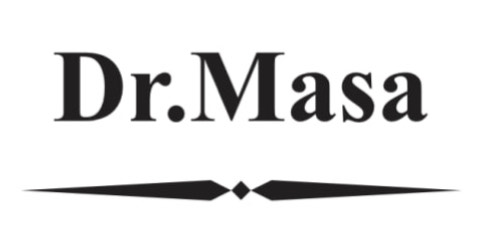OTC contracts are privately negotiated between two counterparties and are ifc markets review unregulated. To hedge this risk, the investor could purchase a currency derivative to, for example, lock in a specific exchange rate. Derivatives that could be used to hedge forex risk include currency futures and currency swaps. A derivative is a financial term often used to refer to a general asset class; however, the actual value derives from the underlying assets. If you are considering diversifying your portfolio by trading derivatives, it’s a good idea to get a thorough understanding beforehand, as higher risk and more complex processes are involved. This guide will explain how they function, the most common derivative contract types, and the benefits and risks of trading derivatives.
What will equations with derivatives look like?
Alternatively, assume an investor doesn’t own the stock currently worth $50 per share. This investor could buy a call option that gives them the right to buy the stock for $50 before or at expiration. Assume this call option costs $2 per share, or $200 for the trade, and the stock rose to $60 before expiration. The buyer can now exercise their option and buy a stock worth $60 per share for the $50 strike price and record a gain of $10 per share.
What is Derivatives?
- The first derivative math or first-order derivative can be interpreted as an instantaneous rate of change.
- Investors typically use option contracts when they don’t want to take a position in the underlying asset but still want exposure in case of large price movements.
- In mathematics, the derivative is a fundamental tool that quantifies the sensitivity to change of a function’s output with respect to its input.
- If the floating interest rate ends up being lower than the fixed amount of $1,000, then Jim profits – he takes on the risk for a chance to profit from the deal.
- Diversification cannot guarantee gains, or that you won’t experience a loss, but it does aim to provide a reasonable trade-off between risk and reward.
They should be considered within the broader context of your portfolio, risk tolerance, and investment strategy. After 30 days, the stock price has risen to $120, and the option’s value has increased to $21. The 20% increase in the stock’s price resulted in a 200% increase in the option’s value.
Let \(s(t)\) be a function giving the position of an object at time t. If you develop a disciplined investment routine, continuously manage risk, and make informed investment decisions, you will have implemented some of the key skills that may lead to financial success. On the other hand, if the stock price rises as hoped, the shareholder makes money on the appreciation in value of the stock in their portfolio. However, they also lose money on the premium paid for the put option.
Markets
Derivatives are financial contracts whose value comes from another asset, like a stock, ETF, or index. It’s a contract between 2 or more parties that defines the underlying asset and the time frame for any future exchanges. Derivatives can be used to increase investment power through leverage, manage investment risk, or trade in anticipation of market changes. Futures are standardized contracts to buy or sell an asset at a set price on a future date. They are traded on futures exchanges like the Chicago Mercantile Exchange. Futures are often used for commodities, like crude oil or corn, currencies, interest rates, and stock market indexes.
Forwards are like futures in many ways, with the most obvious difference being they are traded over the counter and are customizable between the 2 parties. A futures contract, or simply futures, is an agreement between two parties for the purchase and delivery of an asset at an agreed-upon price at a future date. Traders use futures to hedge their risk or speculate on the price of an underlying asset. The parties involved are obligated to fulfill a commitment to buy or sell the underlying asset. Derivatives can be used to hedge, speculate on the directional movement of an underlying asset, or leverage a position. These assets are commonly traded on exchanges or OTC, and can often be entered via an online broker.
The Jacobian matrix is the matrix that represents this linear transformation with respect to the basis given by the choice of independent and dependent variables. It can be calculated in terms of the partial derivatives with respect to the independent variables. For a real-valued function of several variables, the Jacobian matrix reduces to the gradient vector. Derivatives are financial contracts, and their value is determined by the value of an underlying asset or set of assets. Stocks, bonds, currencies, commodities, and market indices are all common assets.
Derivatives are one of the largest, fastest-growing, and most dynamic financial instruments, as they generate new opportunities and can split risk between several parties. Derivative trading can offer leverage and therefore multiply profit with less equity needed. Similar to futures, forwards are used by hedgers as well as speculators. As forwards are non-standardized, institutional investors use them more for hedging. As forwards are over-the-counter instruments, they pose a greater counterparty risk and risk of default.
Active Investor
So, even though investors can profit more on an OTC derivative, more risk is involved. Even though derivatives come with many advantages, hence their popularity among traders, they aren’t for beginner investors due to the higher risk involved. Indeed, many derivatives are leveraged, which means investors can use borrowed money to try to double their profits. In this section we look how to predict and take advantage of the money exchange market 2021 at some applications of the derivative by focusing on the interpretation of the derivative as the rate of change of a function. These applications include acceleration and velocity in physics, population growth rates in biology, and marginal functions in economics. While derivatives could be a small part of a diversified portfolio, they are complex investment products that may not be ideal for most investors.
Prices for derivatives derive from fluctuations in the prices of underlying assets. These financial securities are commonly used to access certain markets and may be traded to hedge against risk. Derivatives can be used to either mitigate risk (hedging) or assume risk with the expectation of commensurate reward (speculation). Derivatives can move risk levels (and the accompanying rewards) from the risk-averse to the risk seekers. Hedgers are institutional investors whose main aim is to lock in the current prices of a commodity through a futures contract, one of the most common types of derivative contracts.
What is a Derivative? Definition Simply Explained
Many derivatives are, in fact, cash-settled, which means that the gain or loss in the trade is simply an accounting cash flow to the trader’s brokerage account. Futures contracts that are cash-settled include many interest rate futures, stock index futures, and more unusual instruments such as volatility futures or weather futures. There are different types of derivatives that can be used for risk management, speculation, and leveraging a position. The derivatives market continues to grow, expanding with products to fit nearly any need or level of risk tolerance.
- Swaps are agreements where 2 parties exchange payments from assets over a set period.
- Stocks, bonds, currencies, commodities, and market indices are all common assets.
- Investors looking to protect or assume risk in a portfolio can employ long, short, or neutral derivative strategies to hedge, speculate, or increase leverage.
- It’s crucial to understand options pricing and how factors, such as market volatility, can significantly affect the total options premium paid.
- For example, brokers ask for the initial investment called the initial margin, set by the futures exchange, usually 3% to 10% of the total value.
However, it can also go the other way – if the interest rate is higher, Jim pays more. Derivatives can pull value from any underlying asset based on several use cases and transactions – exchanging goods and services or financial securities in return for money. Investors looking to protect or assume risk in a portfolio can employ long, short, or neutral derivative strategies to hedge, speculate, or increase leverage. Many investors watch the CBOE Volatility Index (VIX) to measure potential leverage because it also predicts the volatility of S&P 500 index options. High volatility can increase the value and cost of both puts and calls. For example, the owner of a stock buys a put option on that stock to protect their portfolio against a decline in the price of the modern forex indicators stock.
However, this investor is concerned about potential risks and decides to hedge their position with an option. Each option contract represents 100 shares, so the investor paid $200 to enter this trade. Forward contracts, or forwards, are similar to futures, but they do not trade on an exchange. When a forward contract is created, the buyer and seller may customize the terms, size, and settlement process. As OTC products, forward contracts carry a greater degree of counterparty risk.
The company does this because it needs oil in December and is concerned that the price will rise before the company needs to buy. Buying an oil futures contract hedges the company’s risk because the seller is obligated to deliver oil to Company A for $62.22 per barrel once the contract expires. Company A can accept delivery of the oil from the seller of the futures contract, but if it no longer needs the oil, it can also sell the contract before expiration and keep the profits. Assume a European investor has investment accounts that are all denominated in euros (EUR). Let’s say they purchase shares of a U.S. company through a U.S. exchange using U.S. dollars (USD). This means they are now exposed to exchange rate risk while holding that stock.
A commodity swap exchanges cash flows dependent on the underlying asset or commodity. Companies use it to hedge against price swings in the market, such as wheat, gold, or oil, allowing businesses to lock in prices of raw materials needed in their production process. As opposed to other standardized derivative contracts like futures or options, swaps are traded only over-the-counter (OTC) and not on an exchange.
A common reason some experienced investors have utilized derivatives is to trade in anticipation of expected market-moving events. For example, those investors with a higher risk tolerance may focus on options during earnings. Options may experience increased demand around quarterly earnings and Federal Reserve interest rate announcements. Market expectations can be confirmed or denied, sometimes leading to reactions that opportunistic investors may be able to capitalize on.

